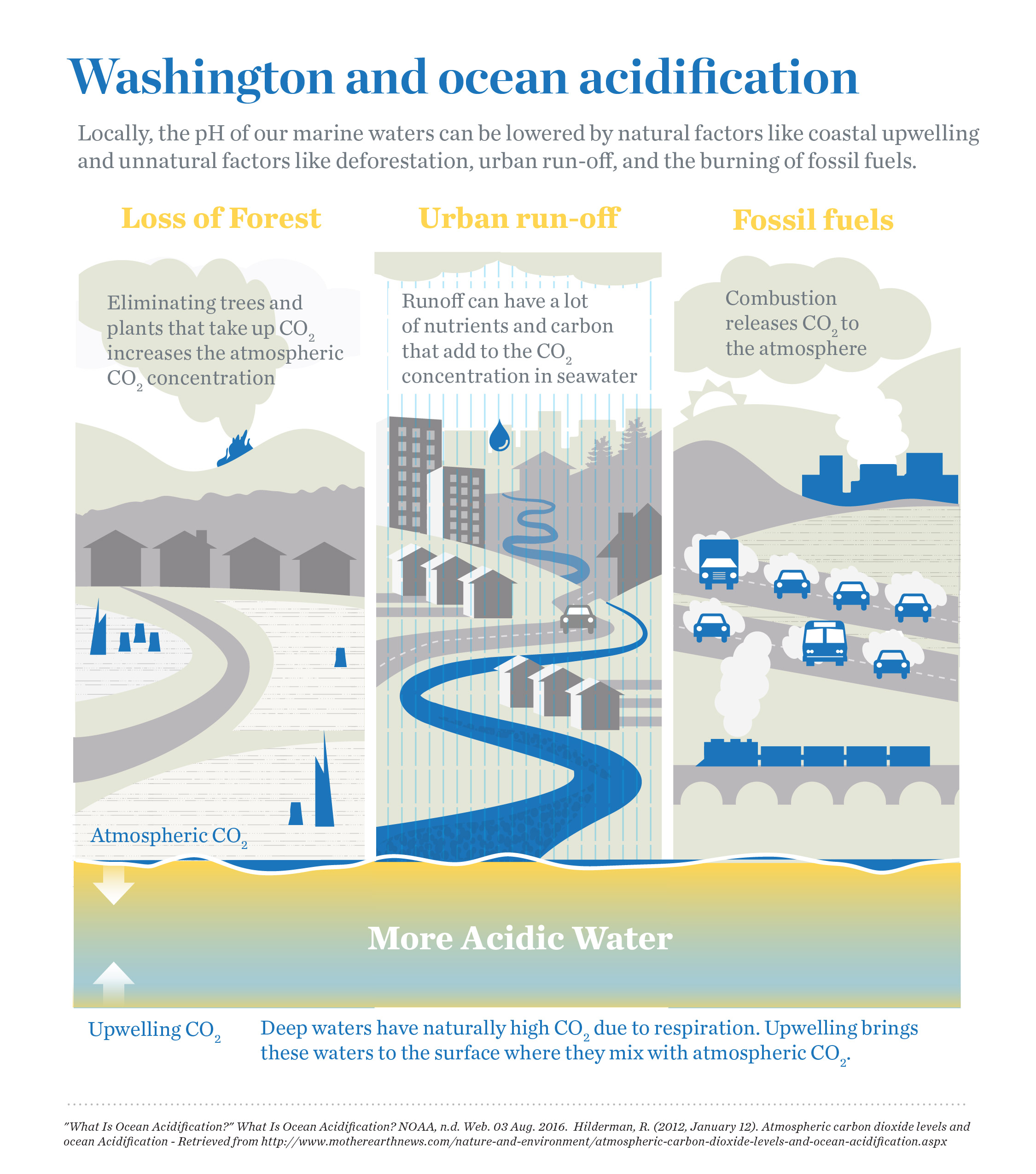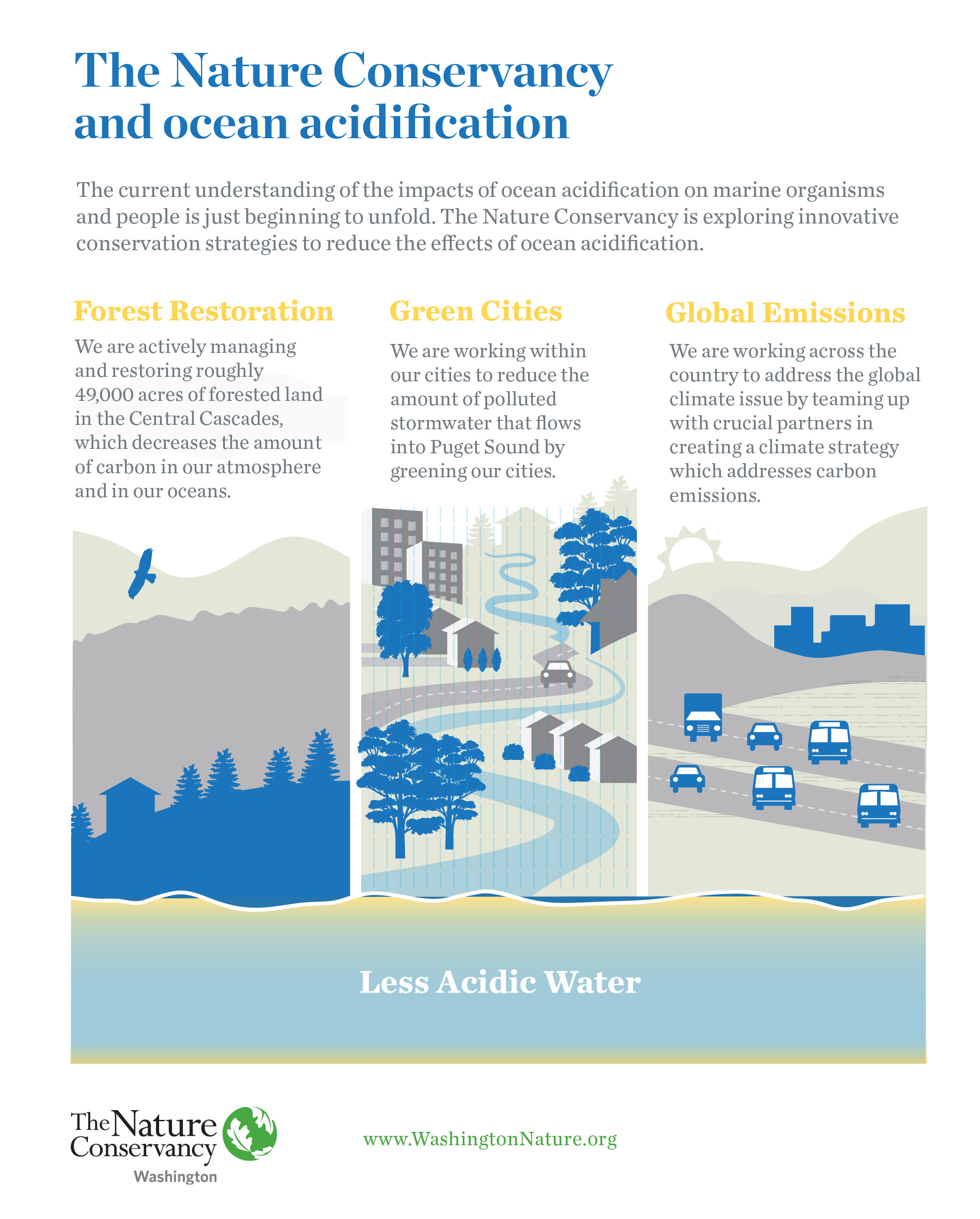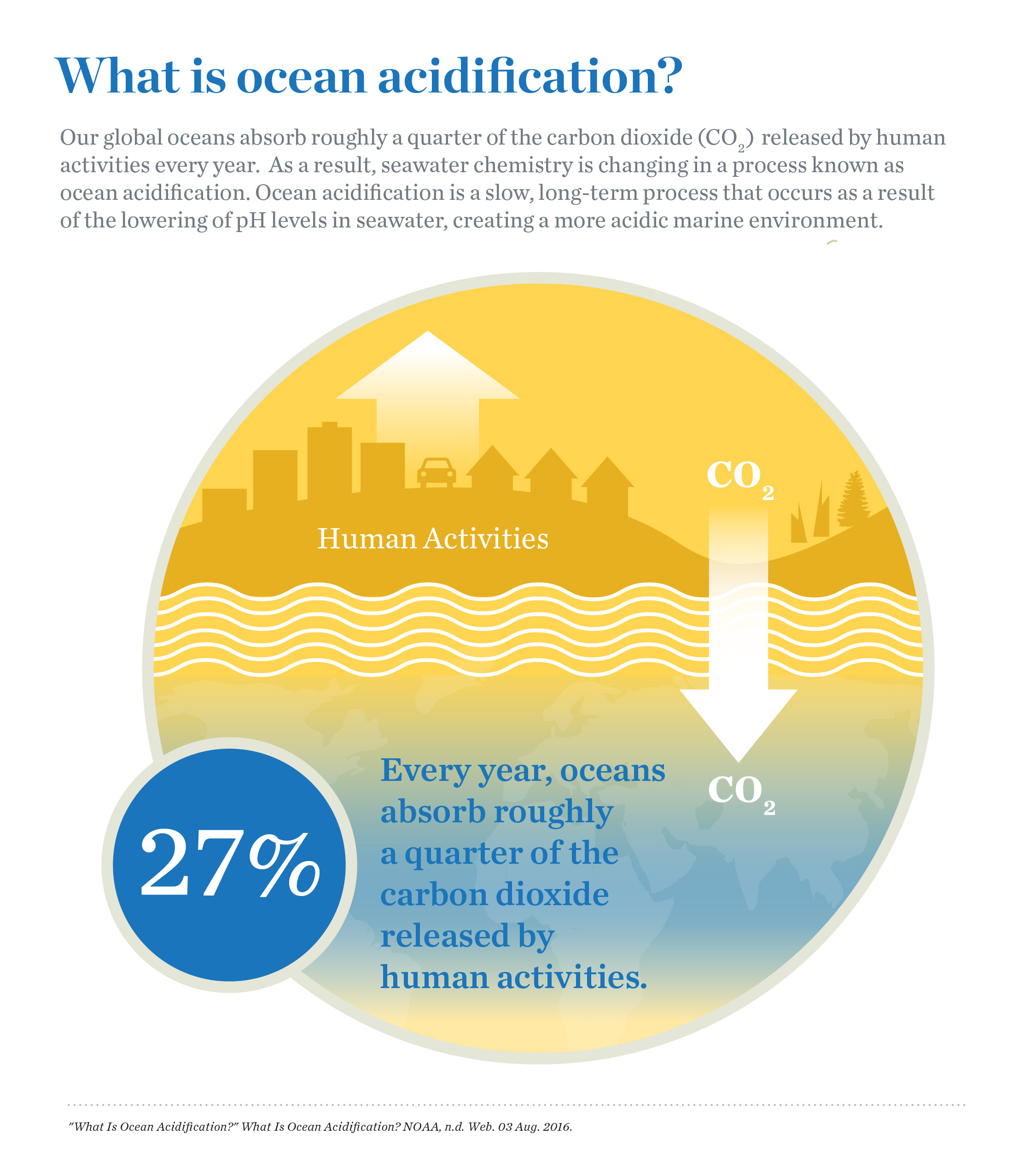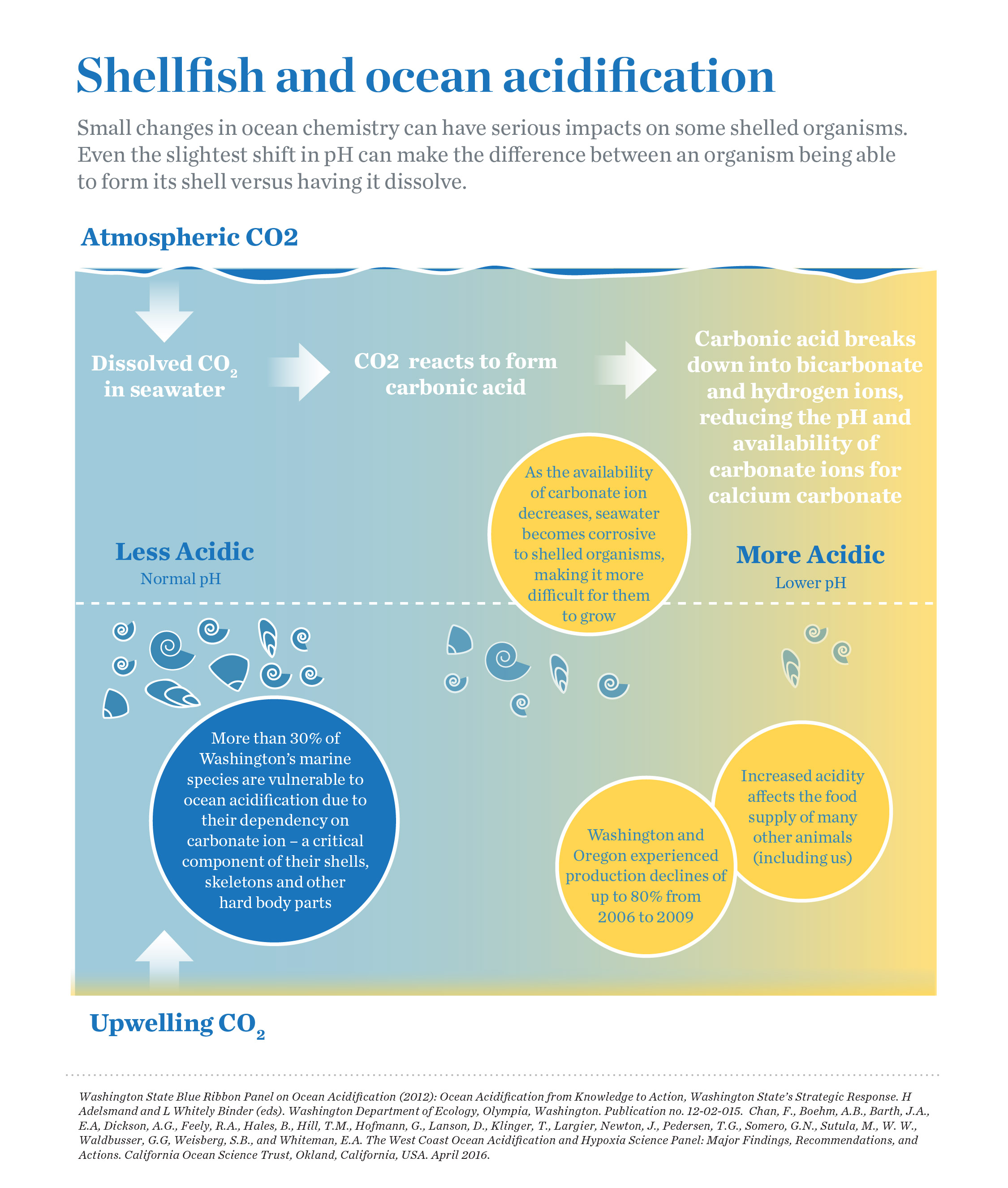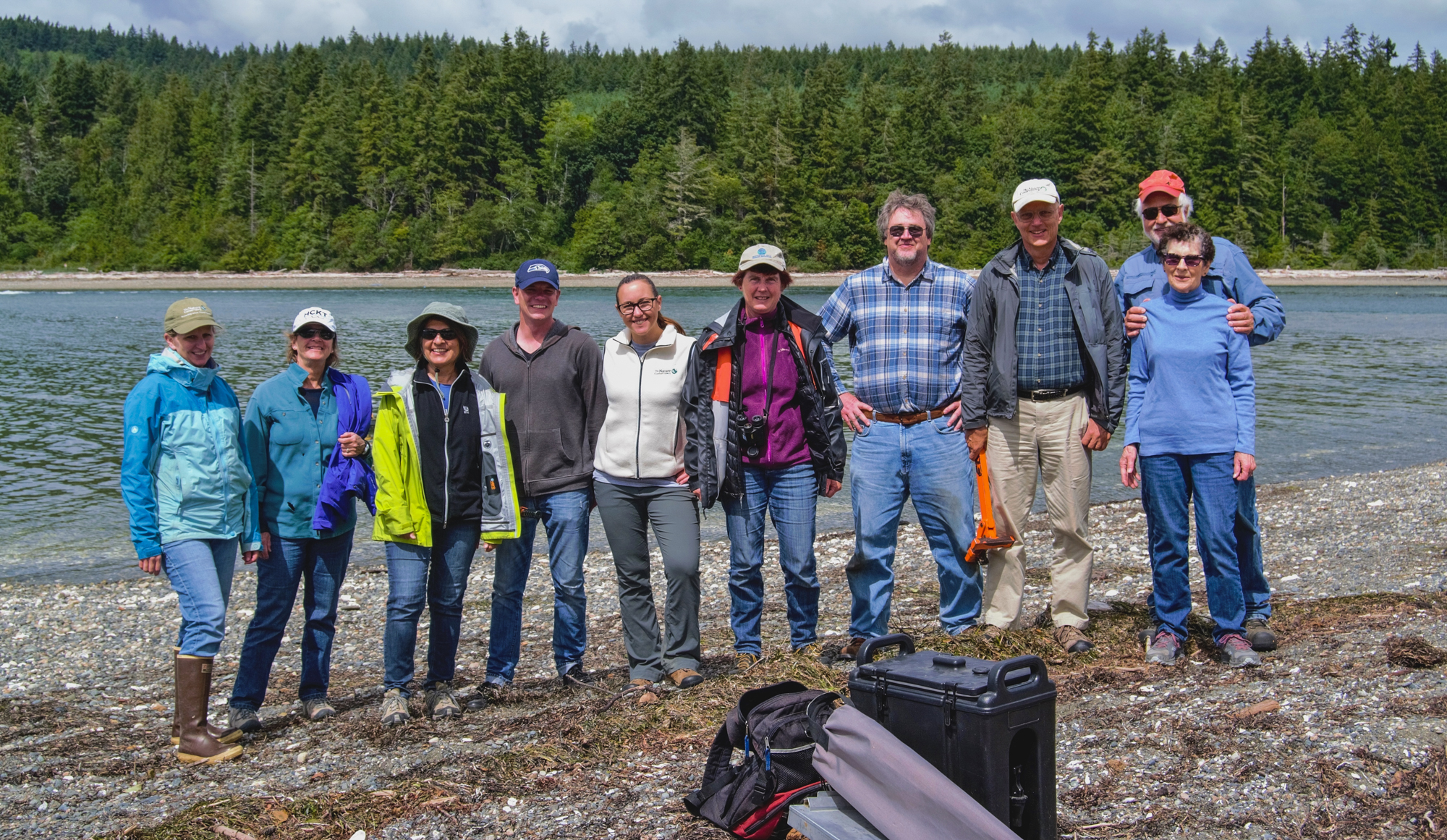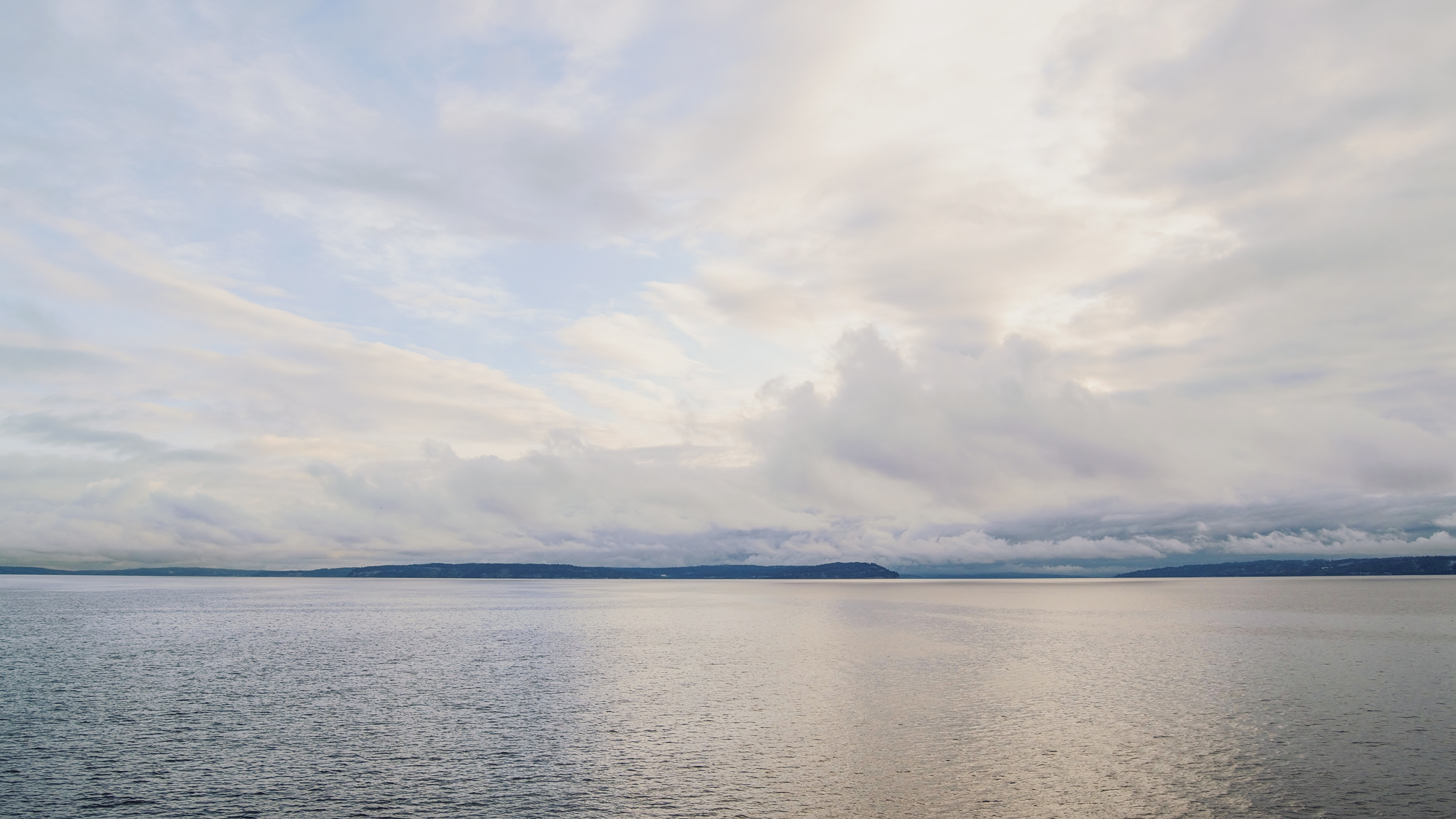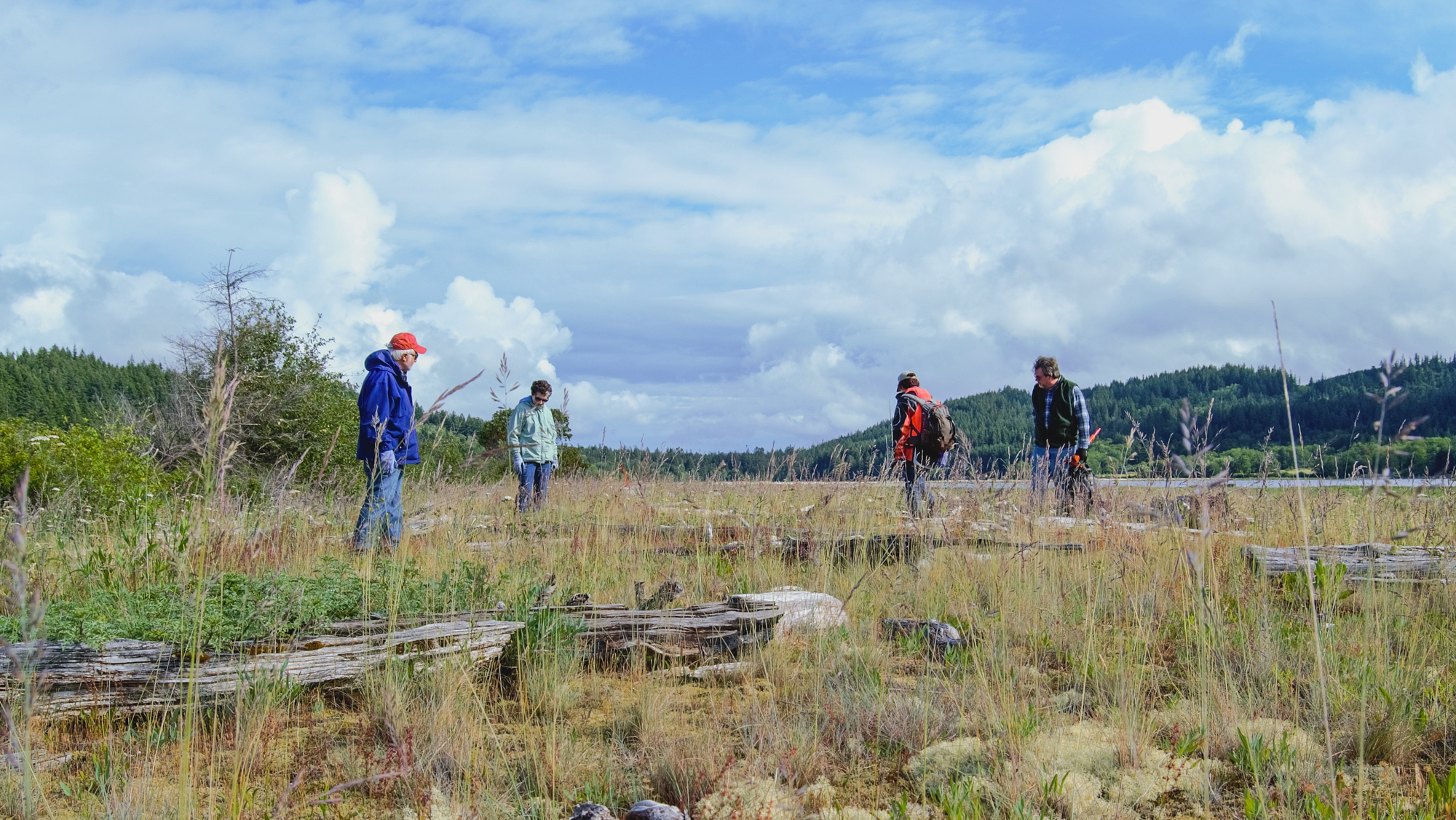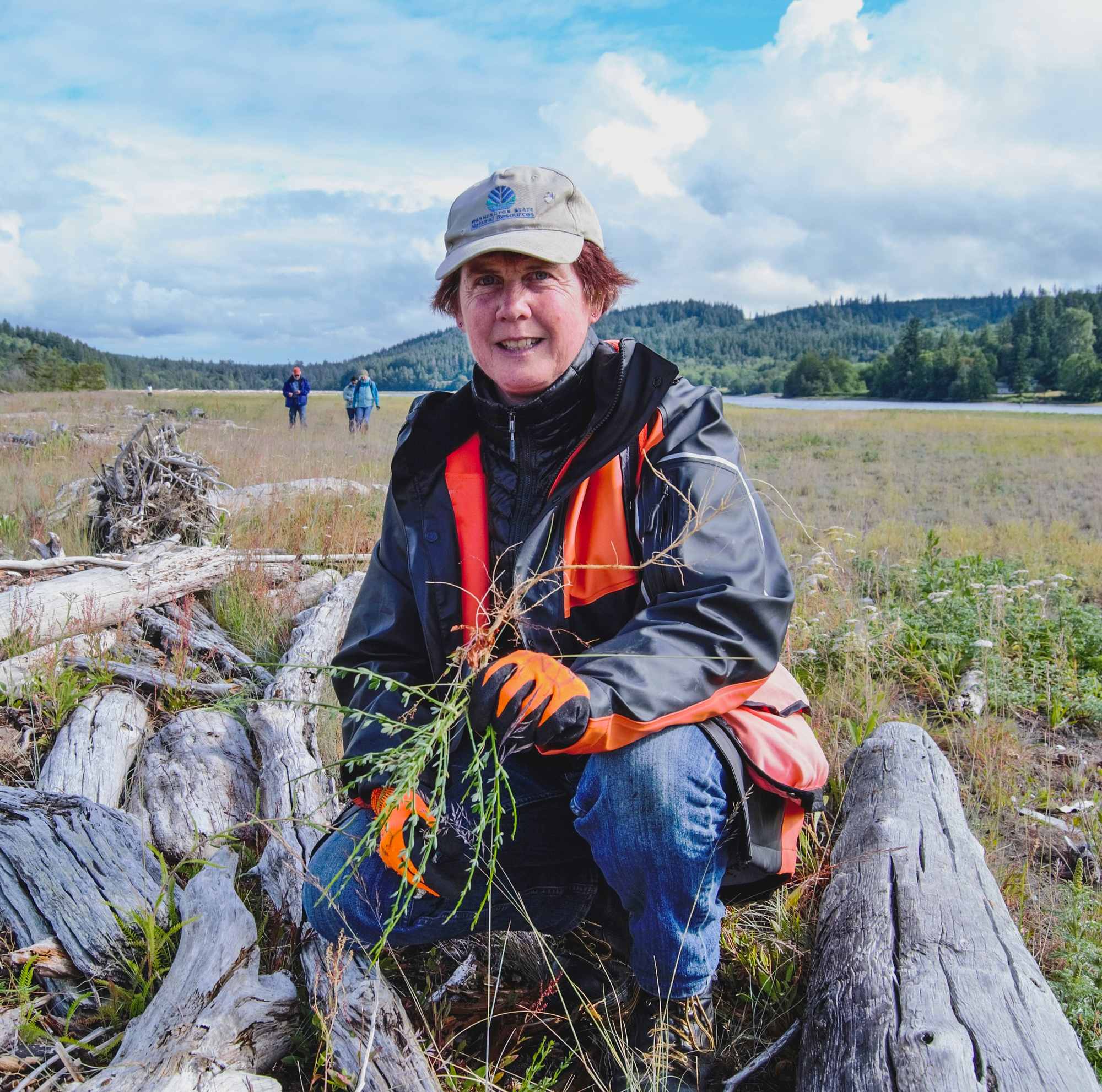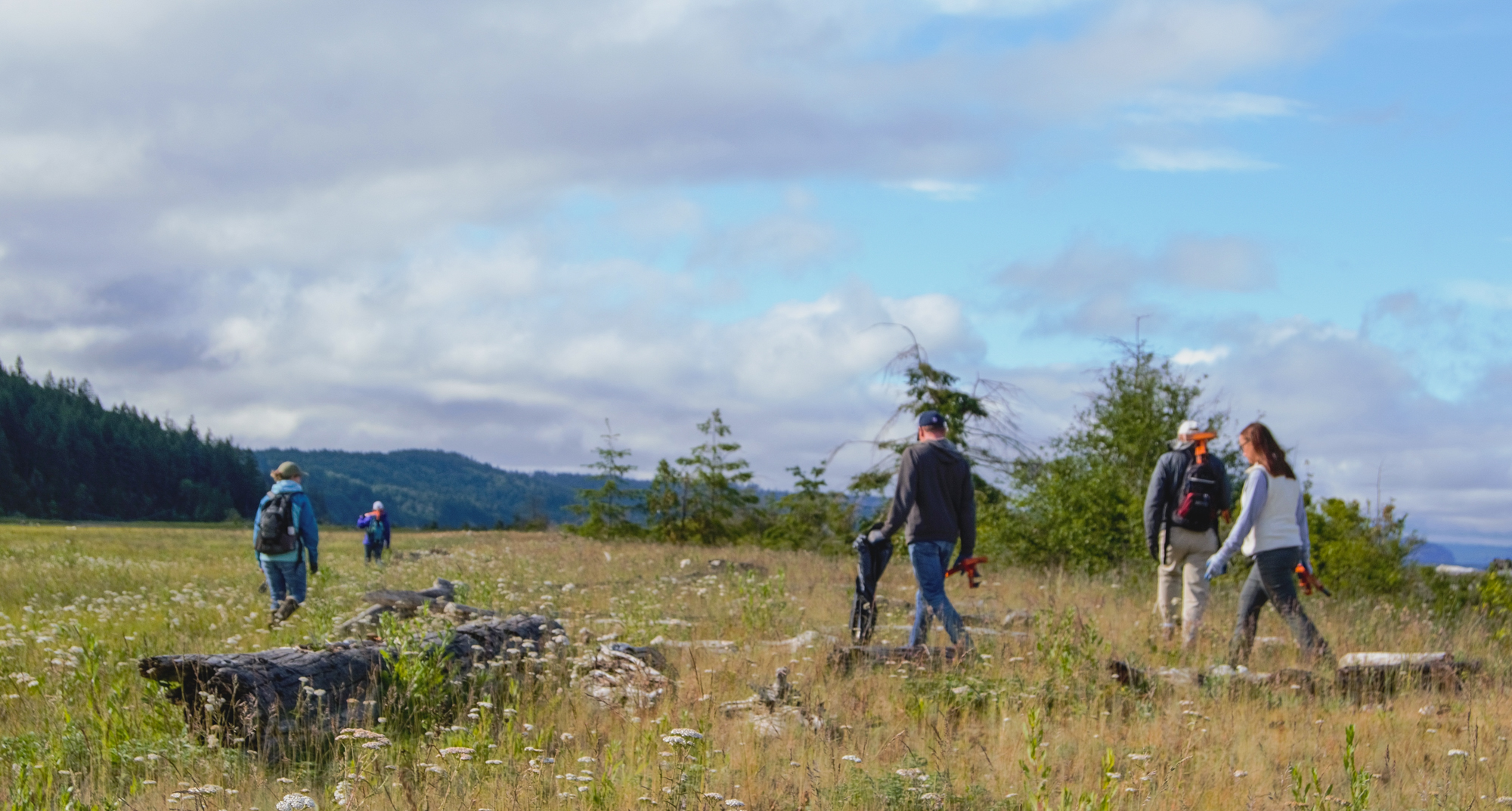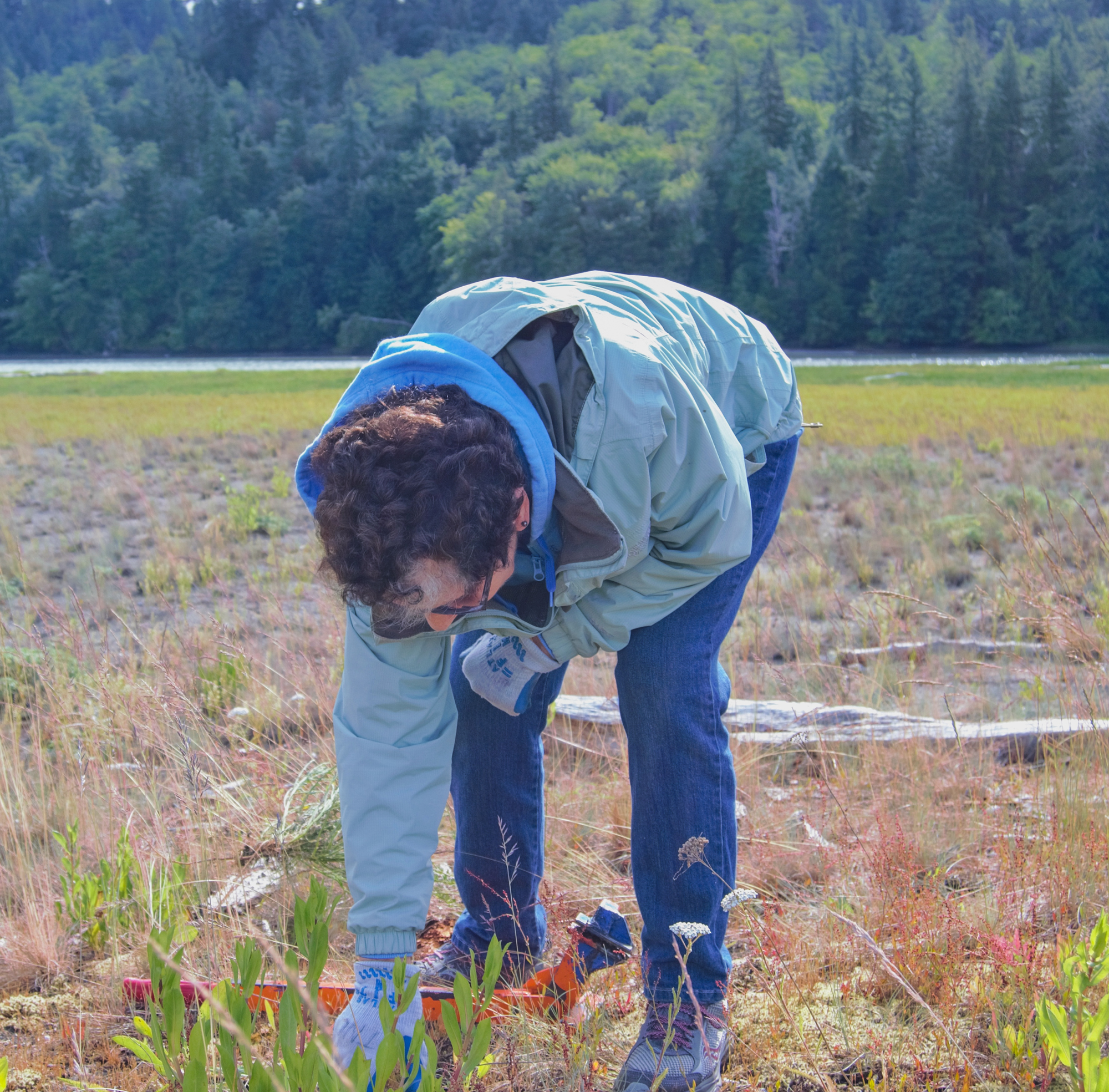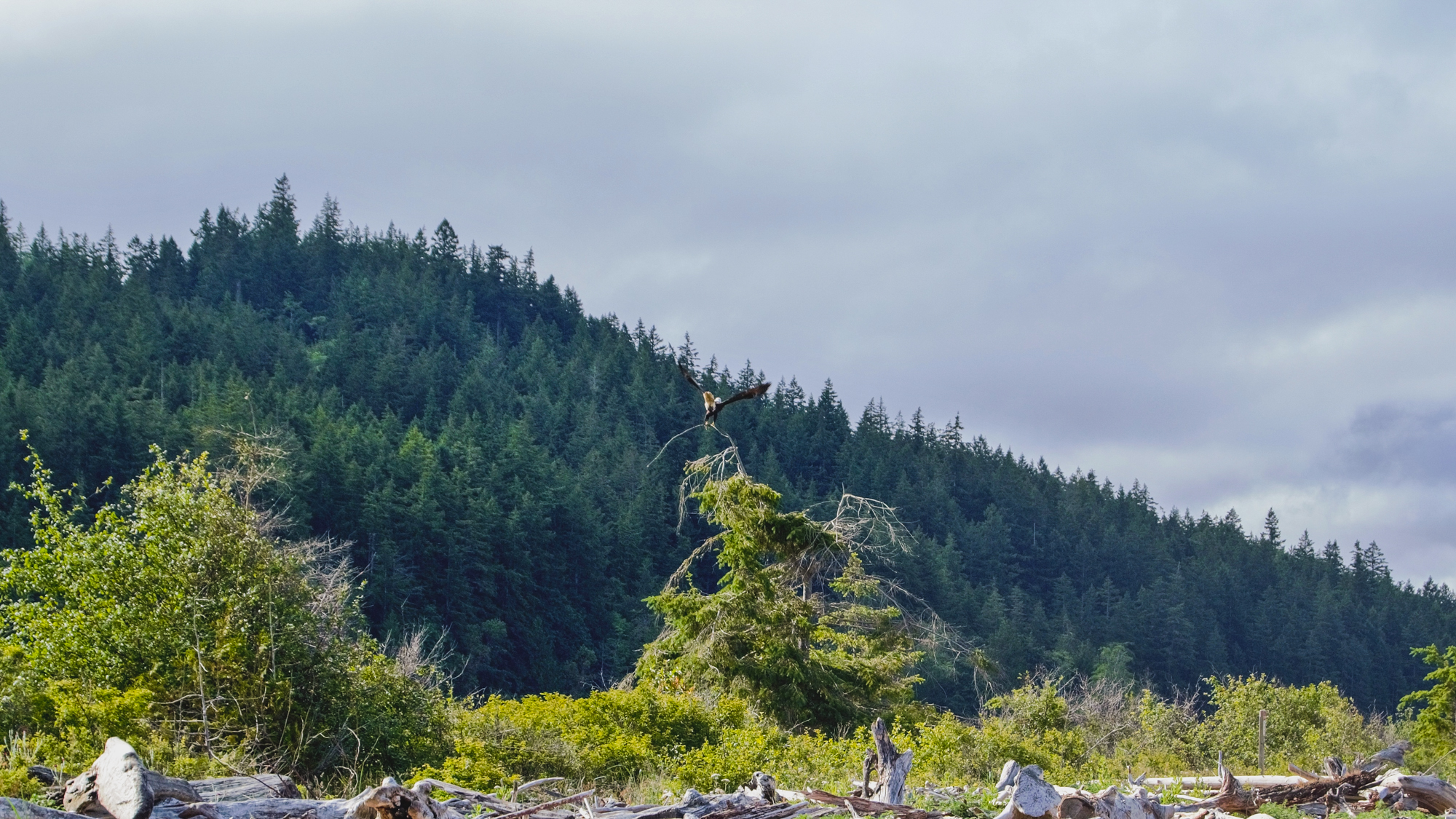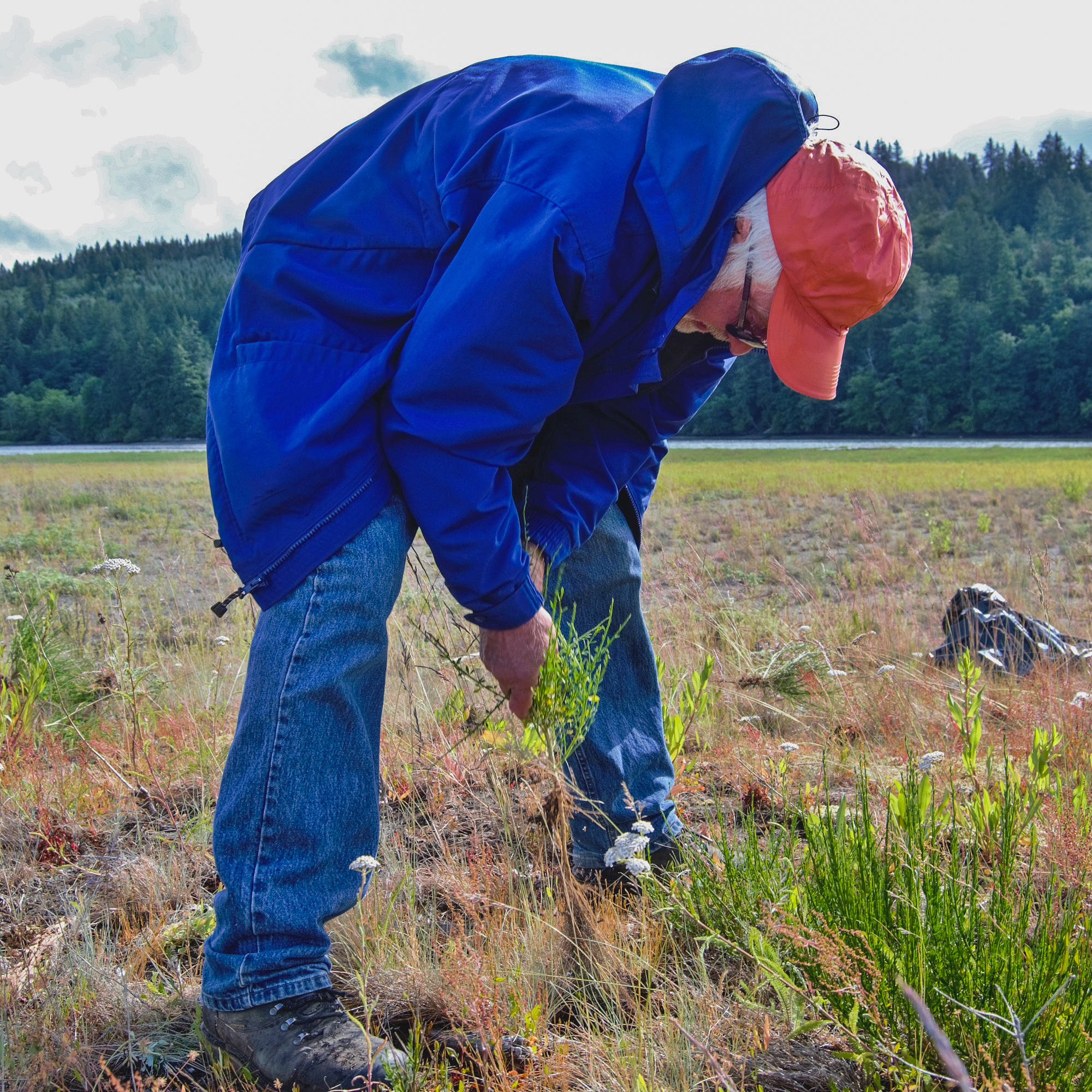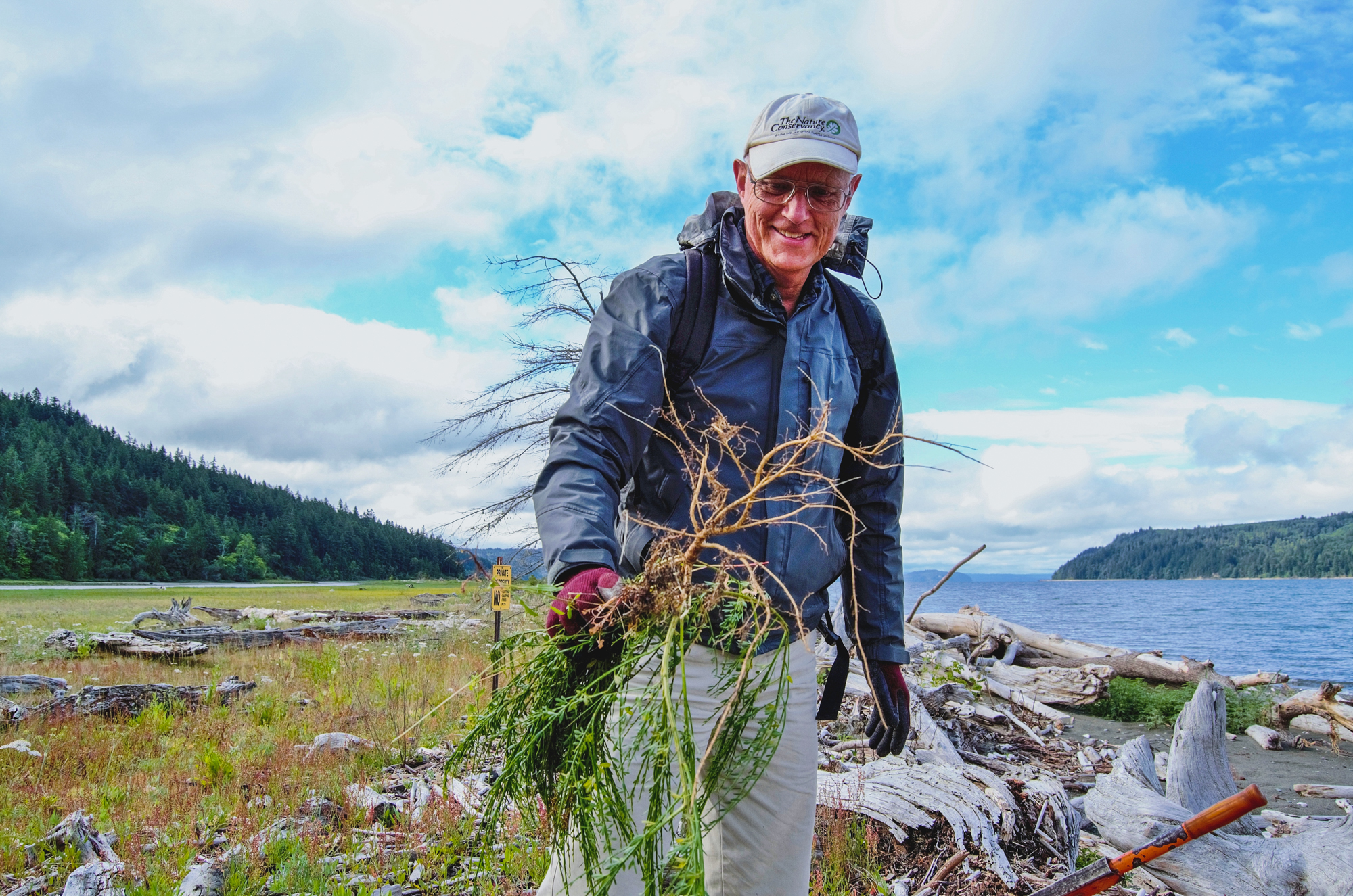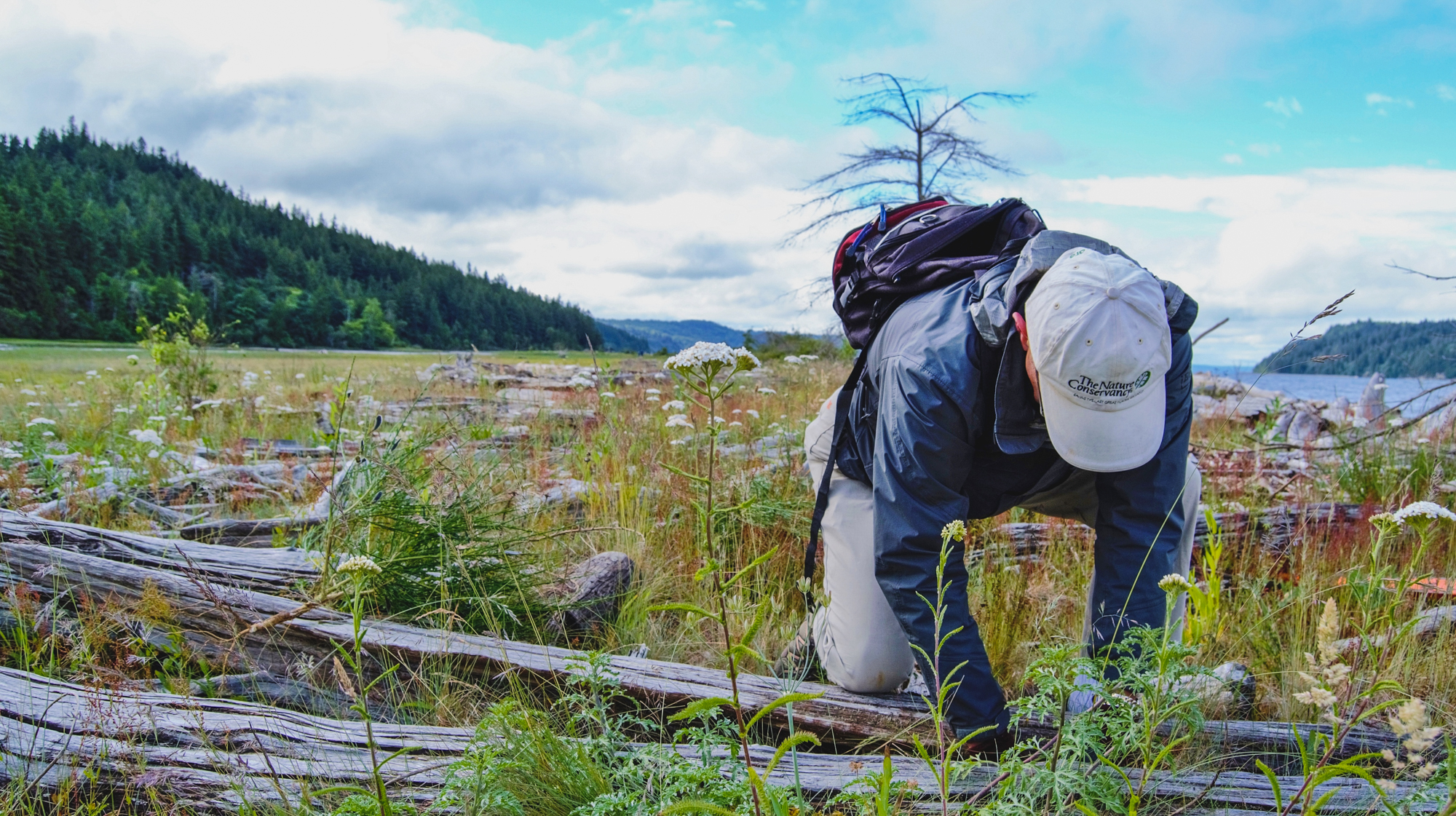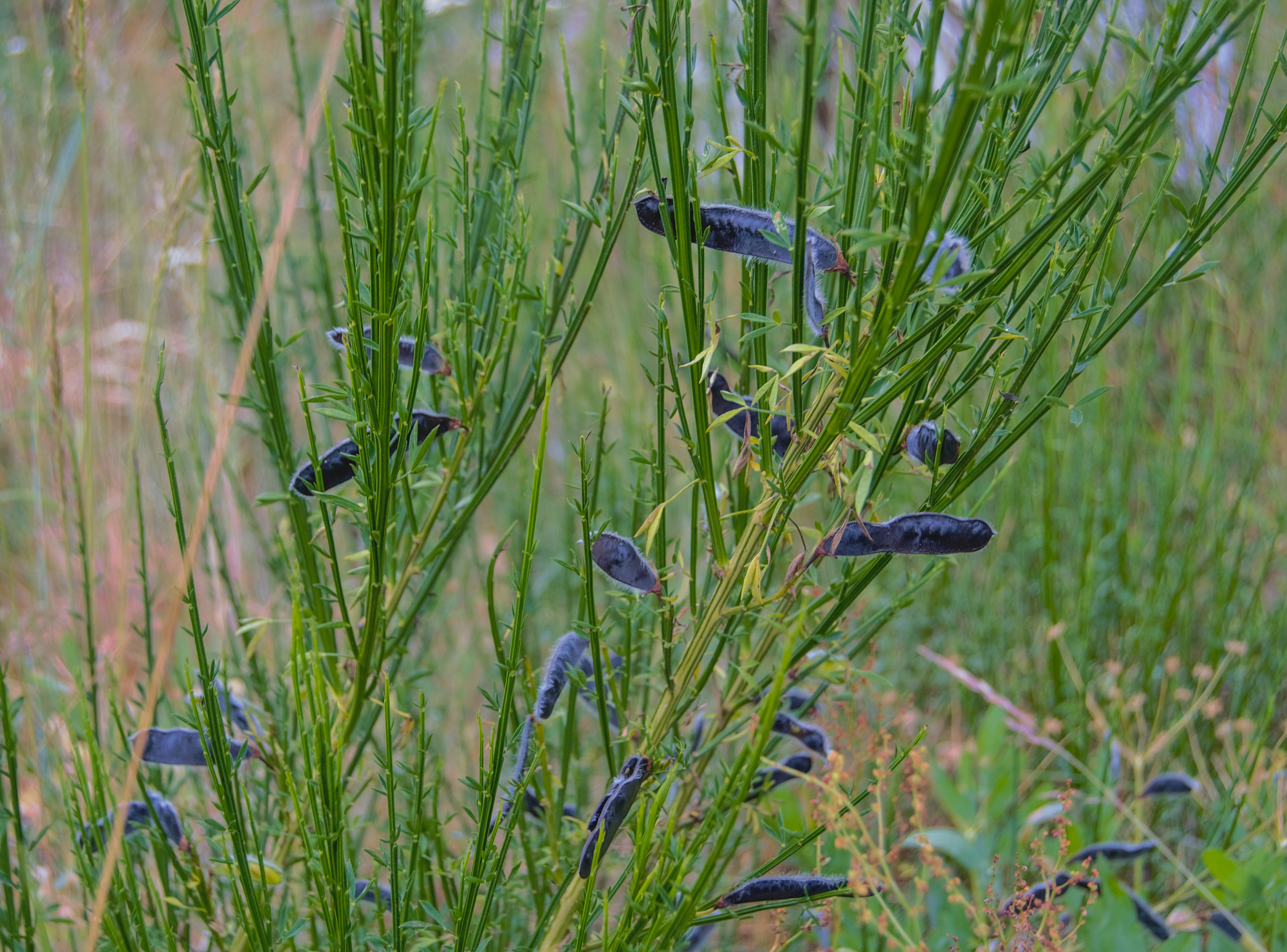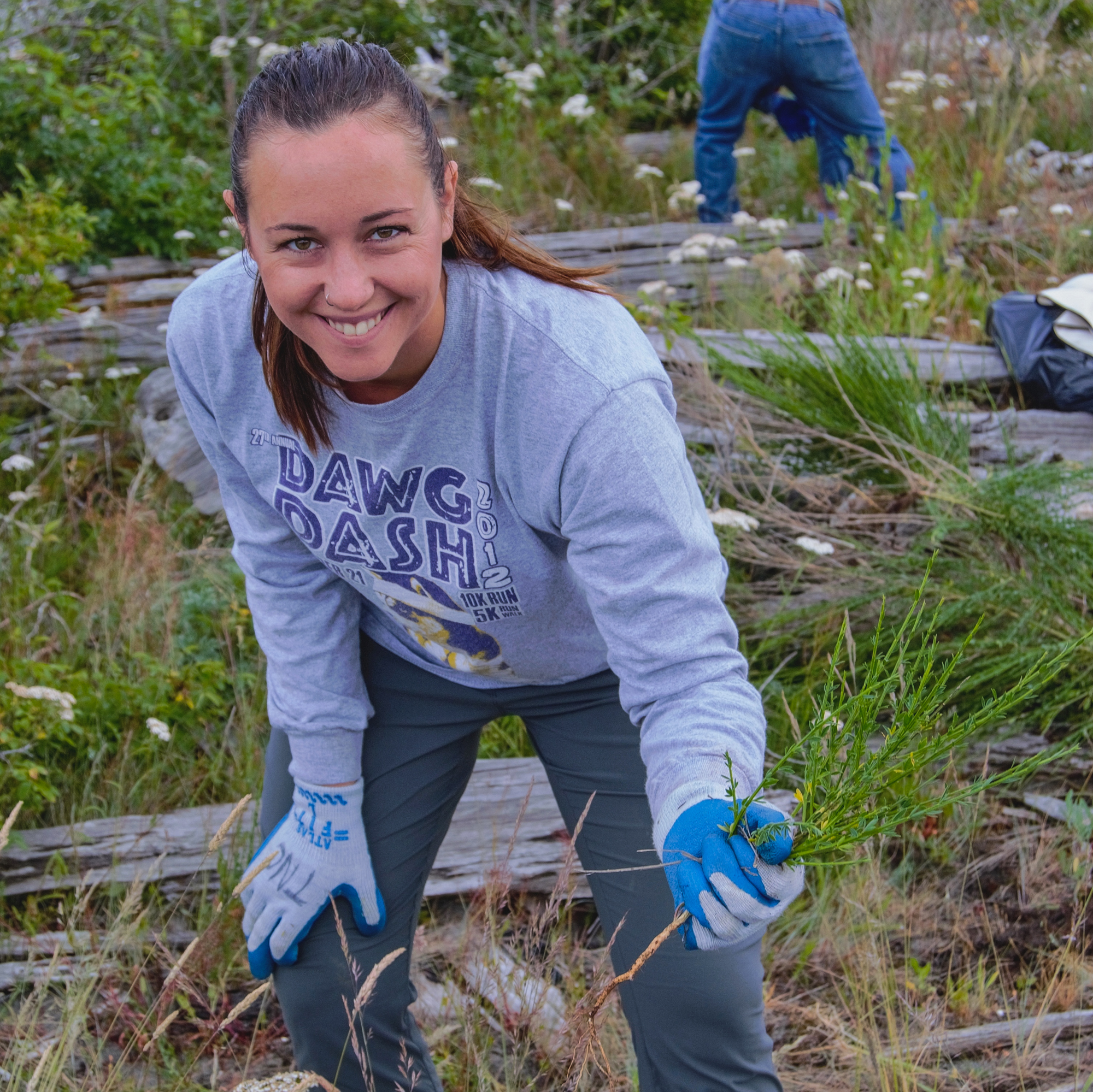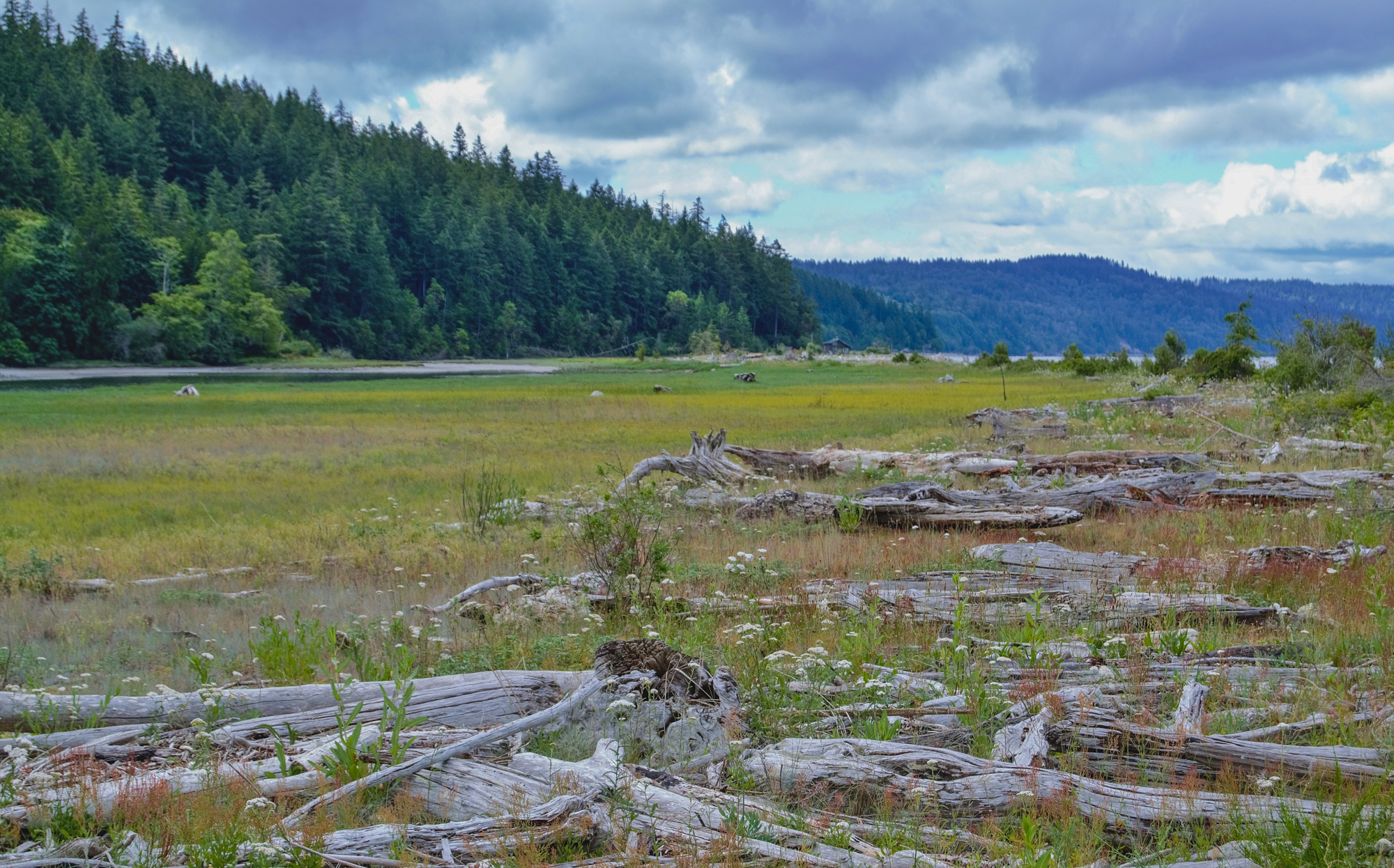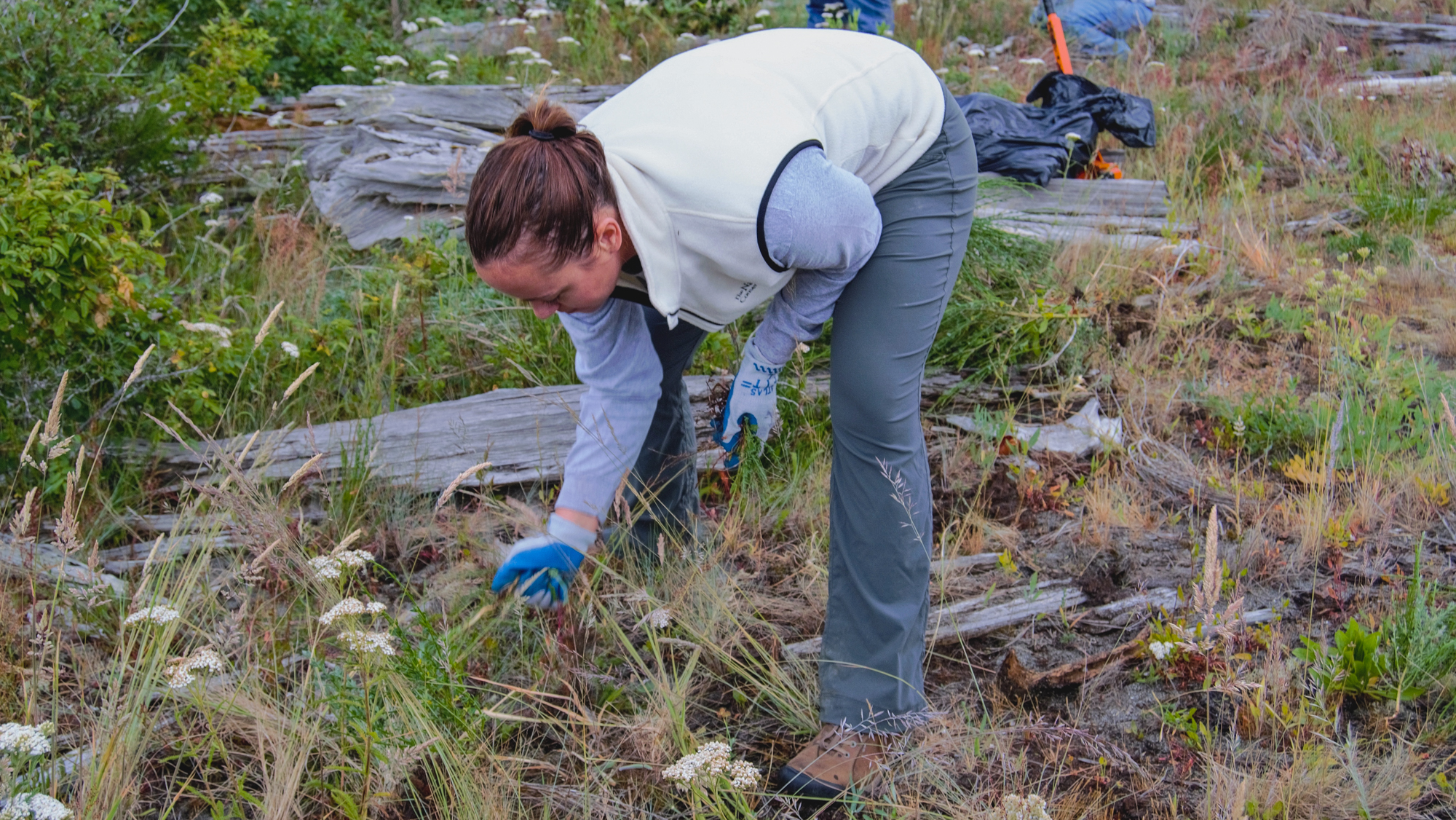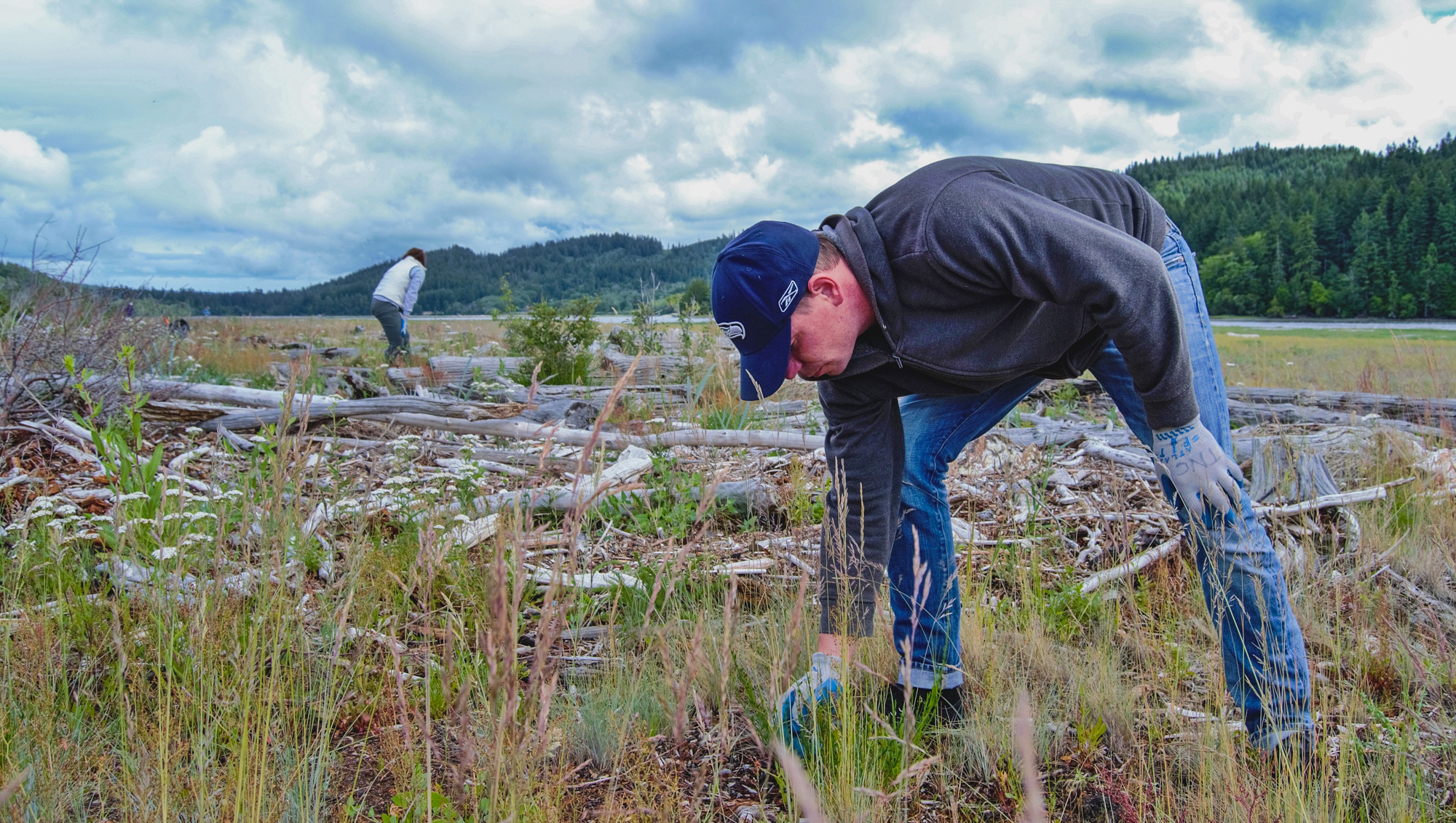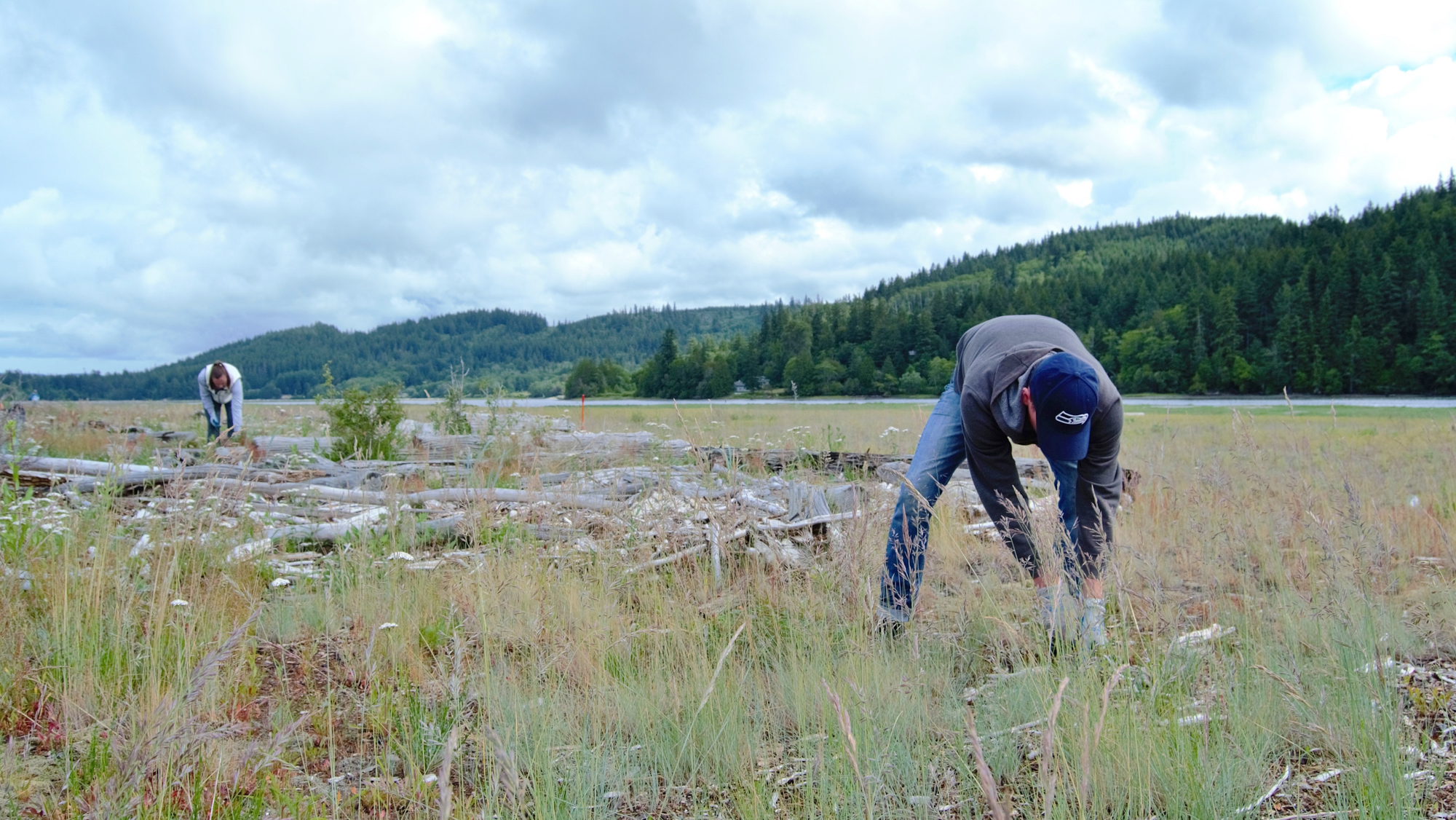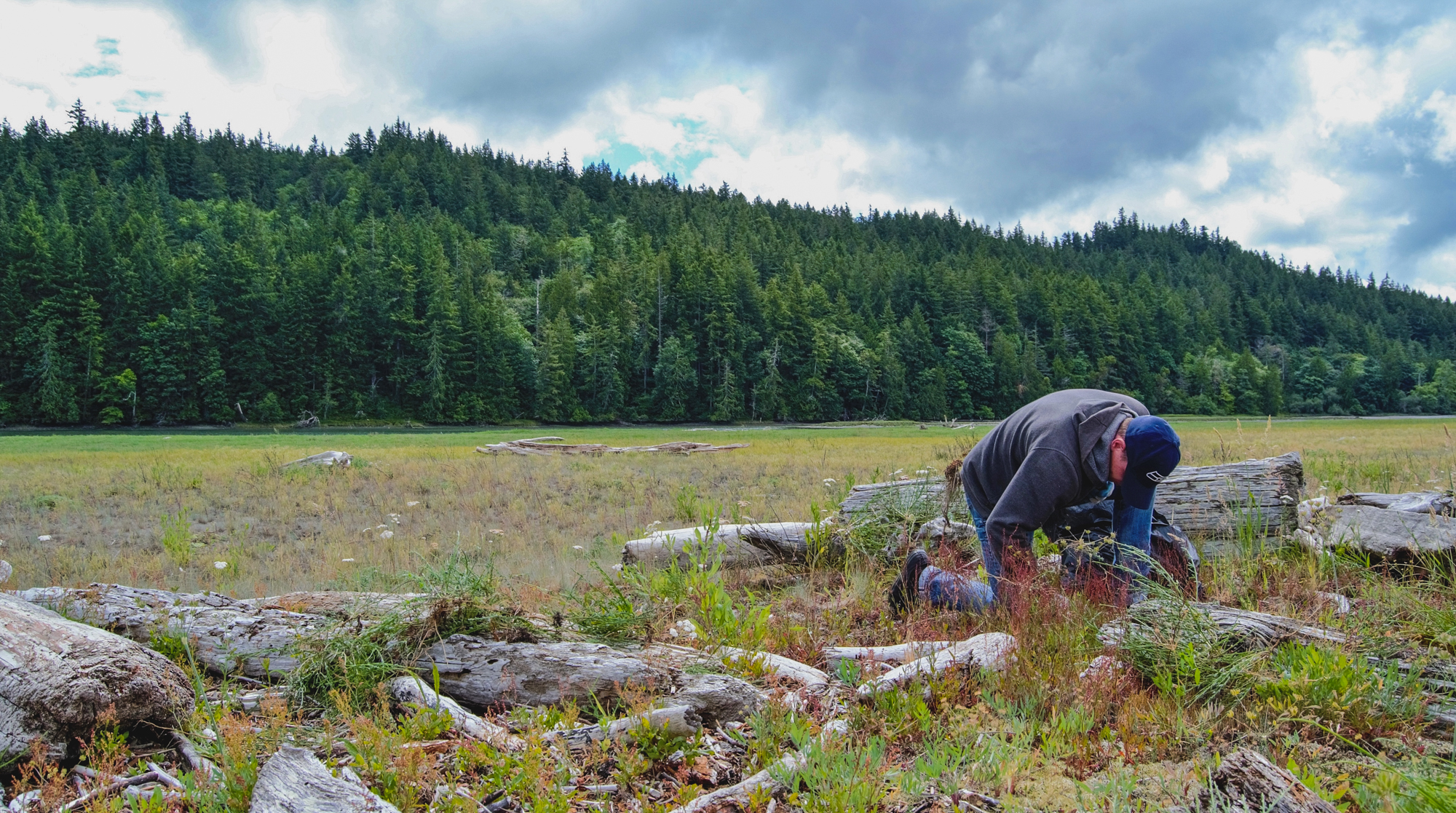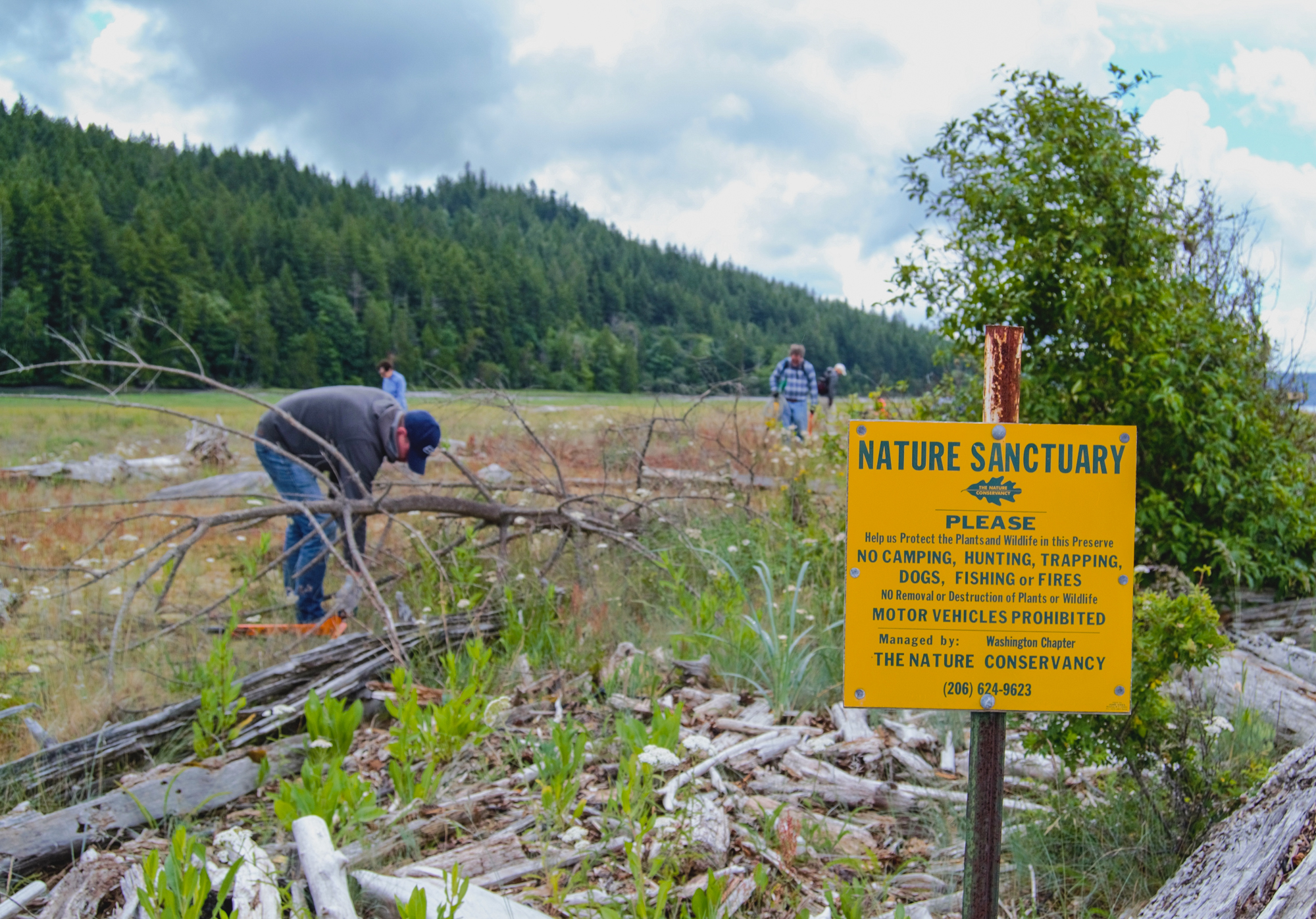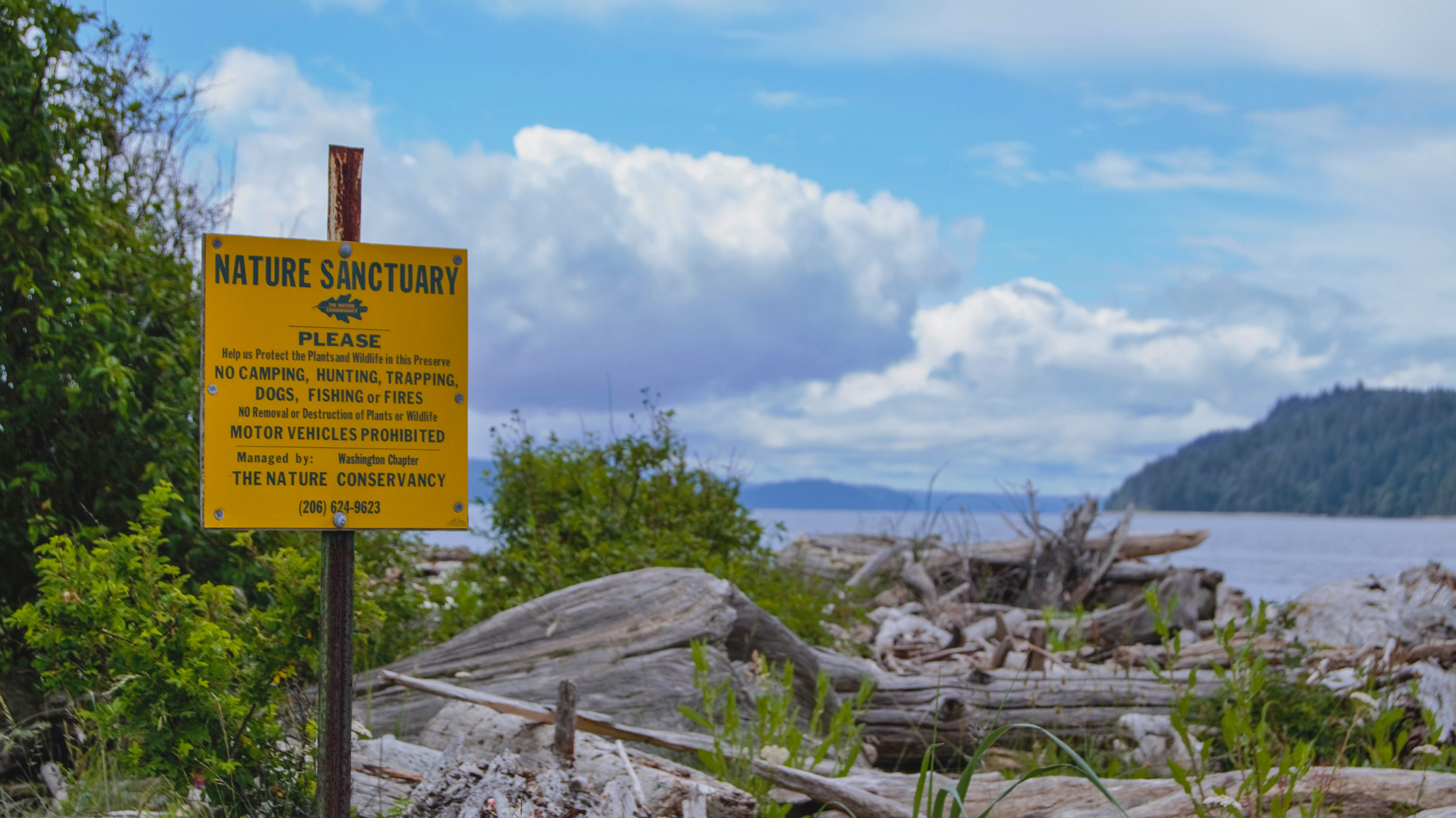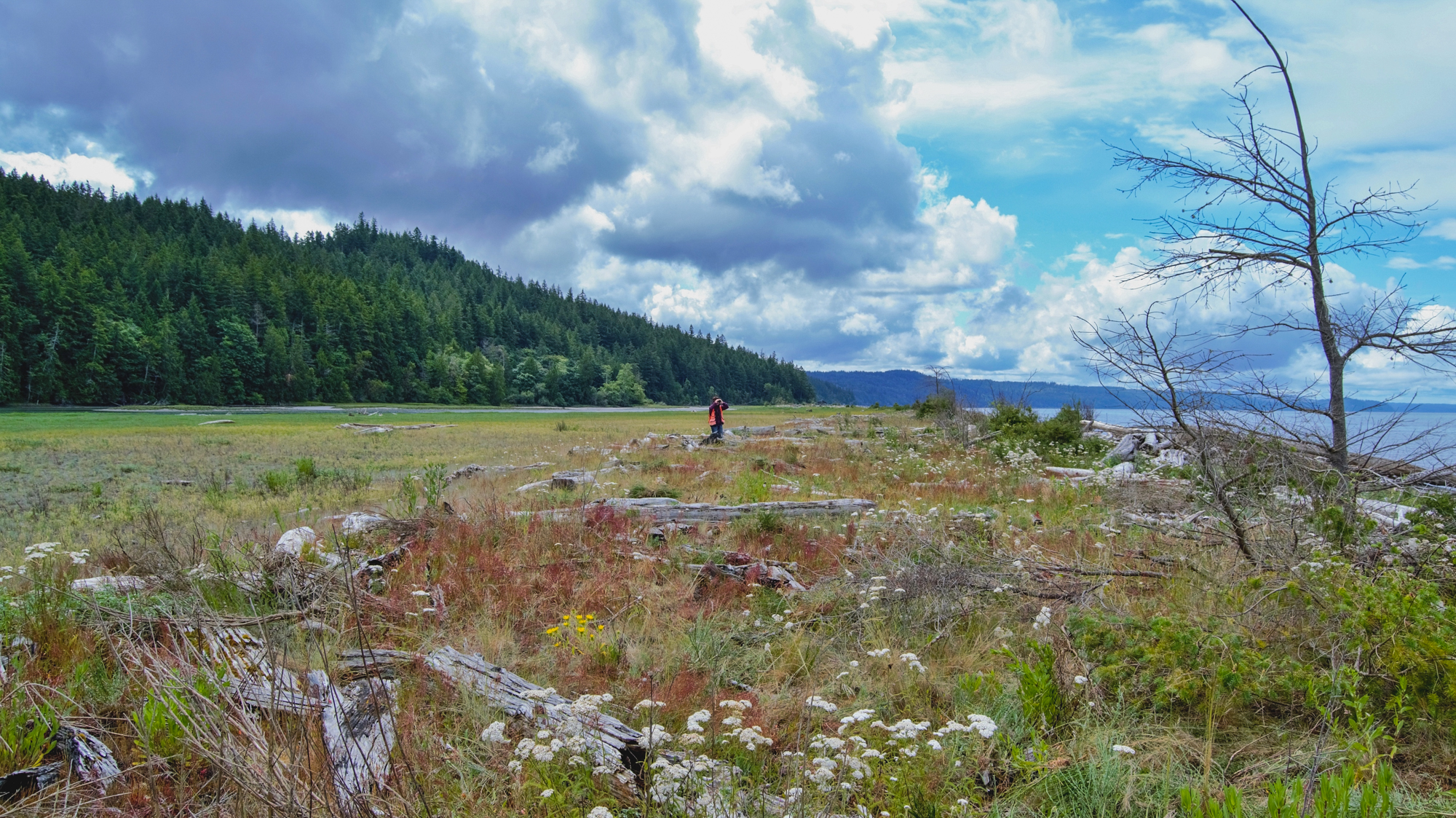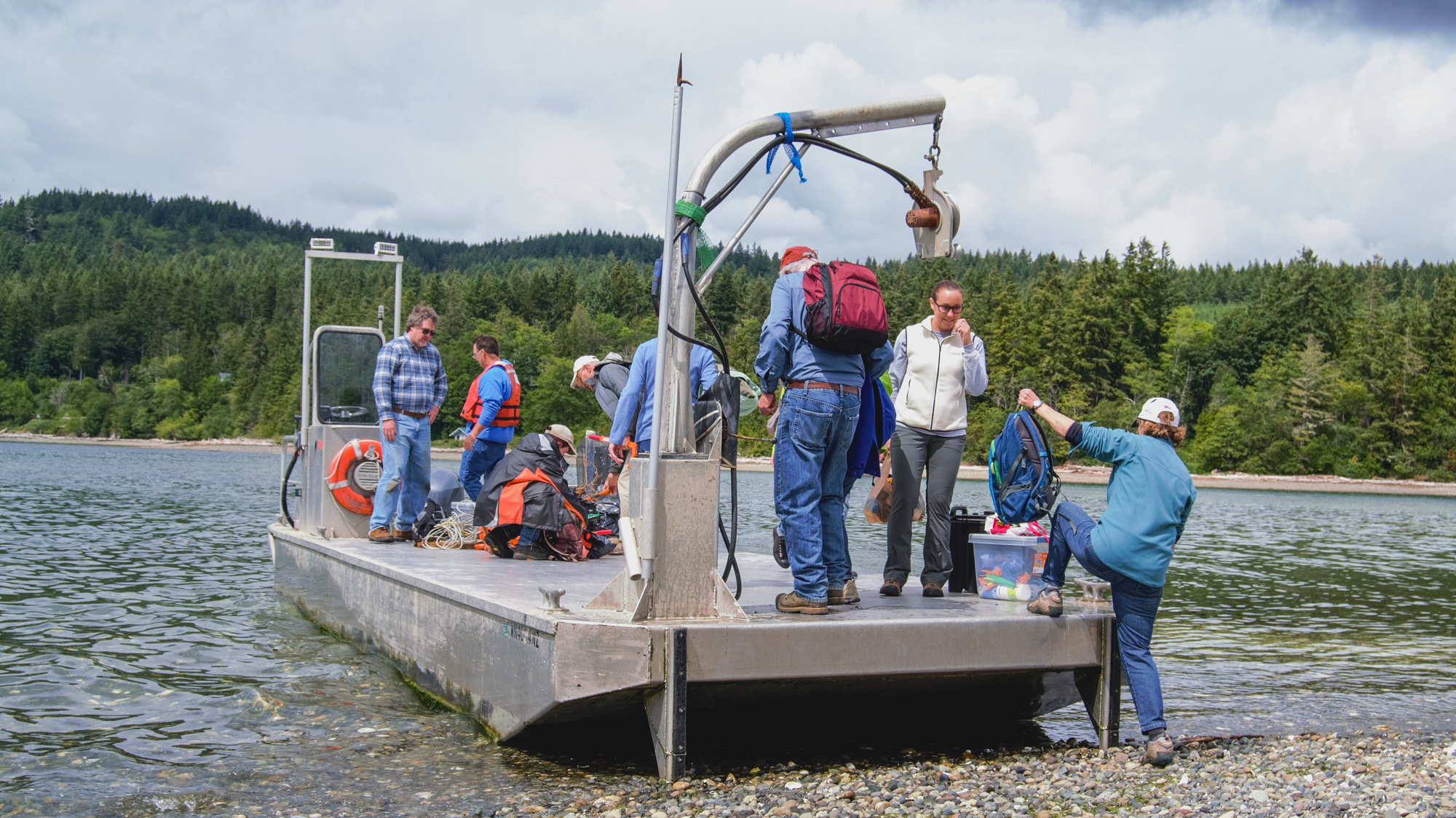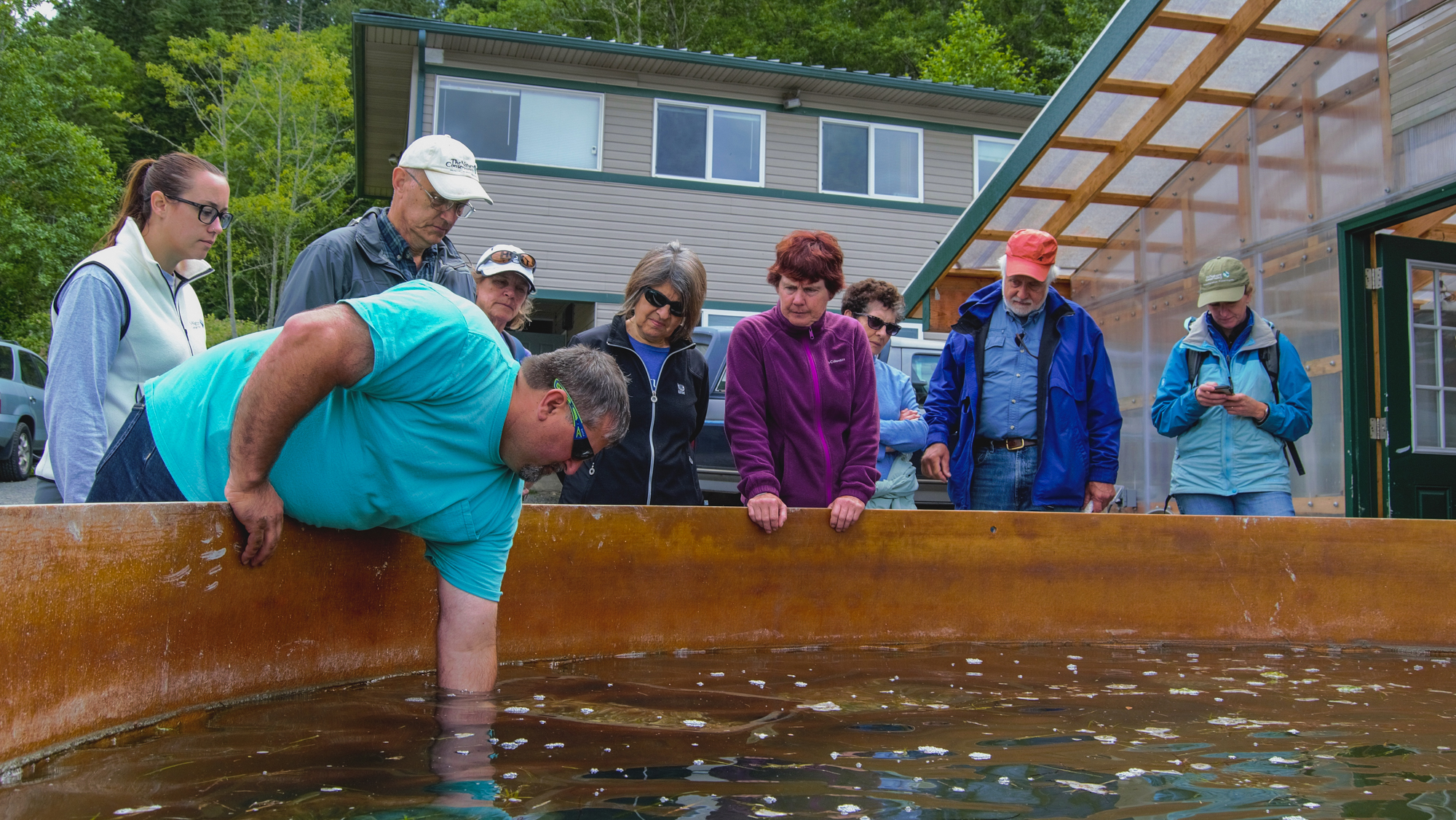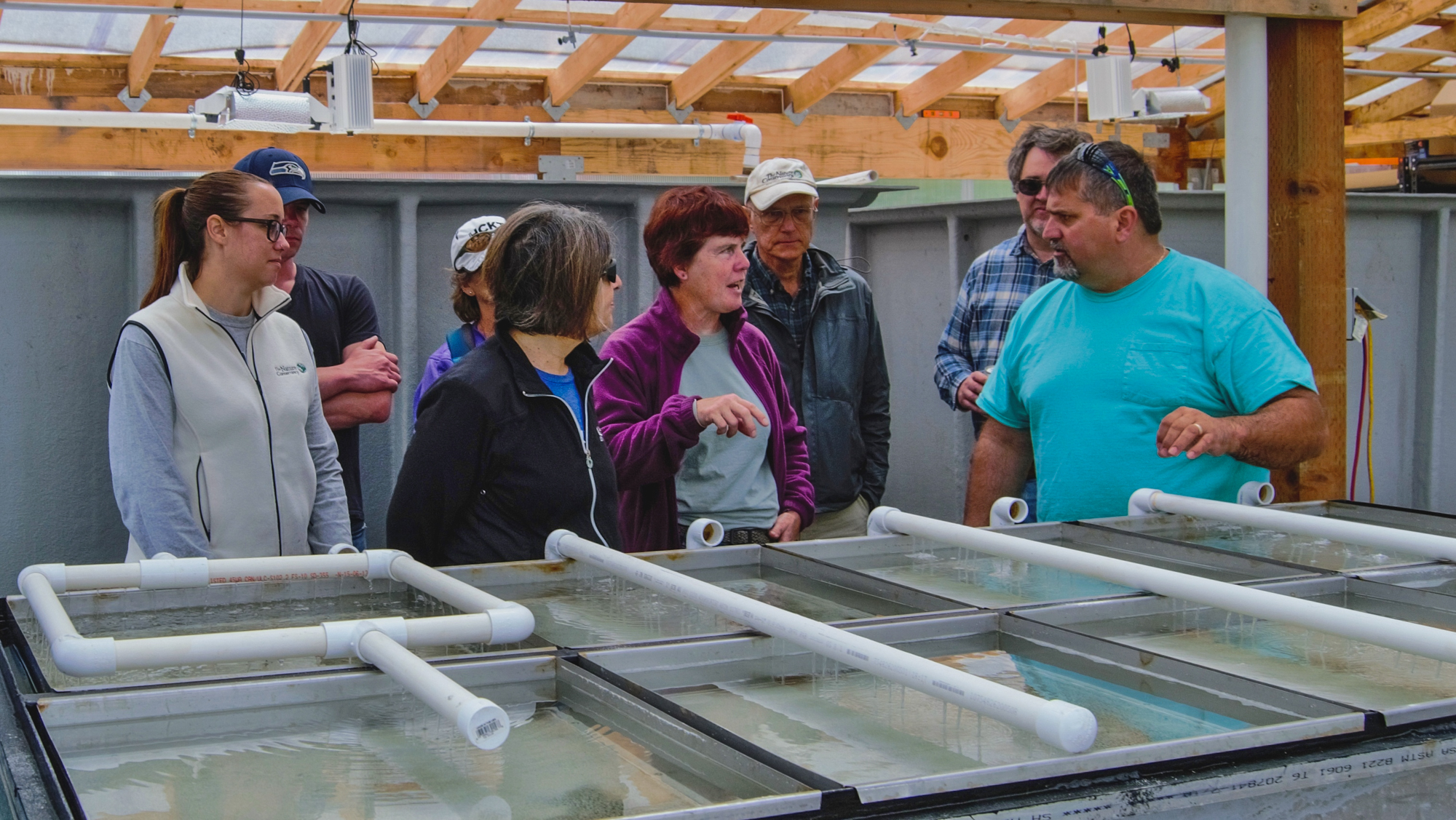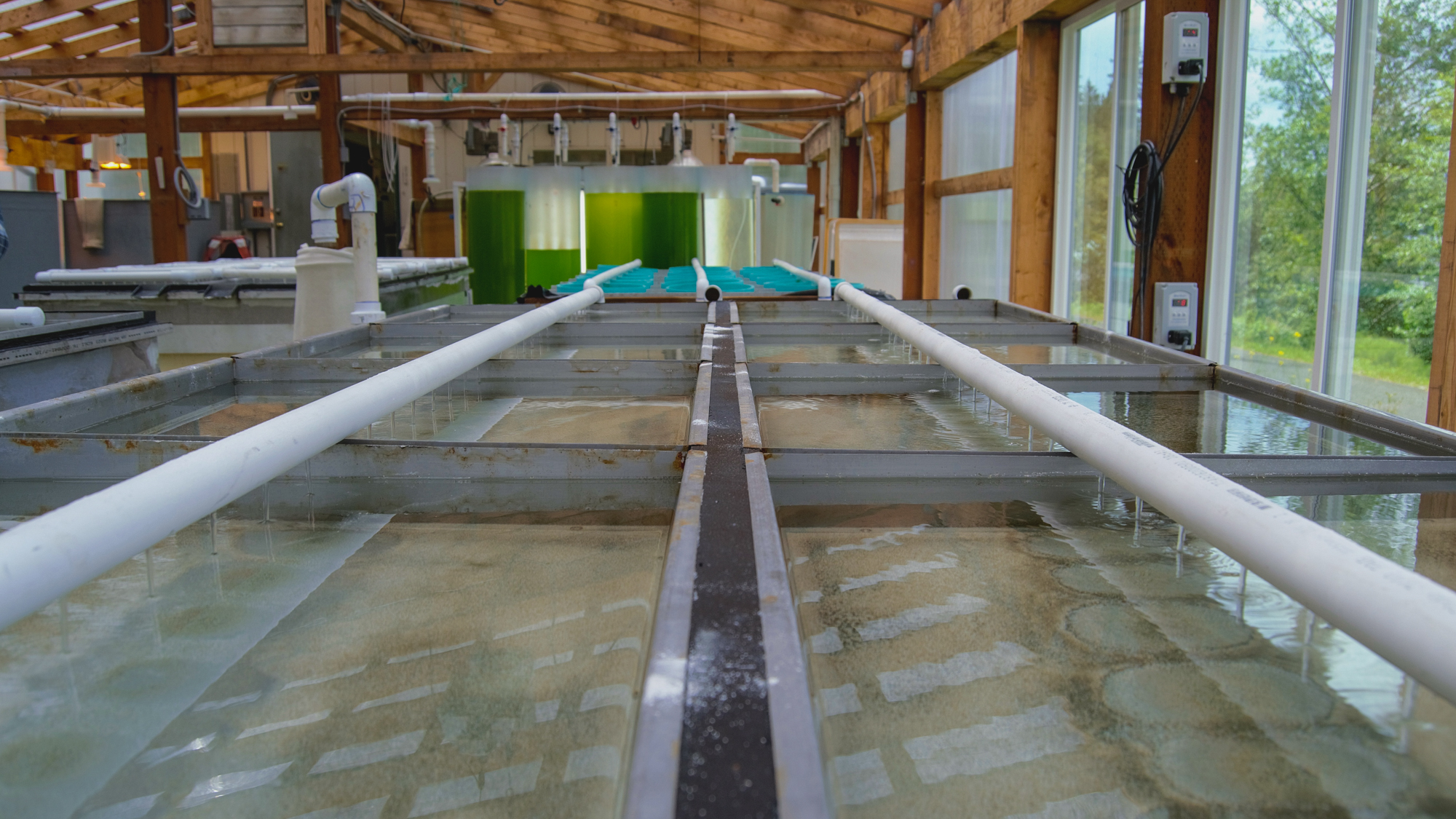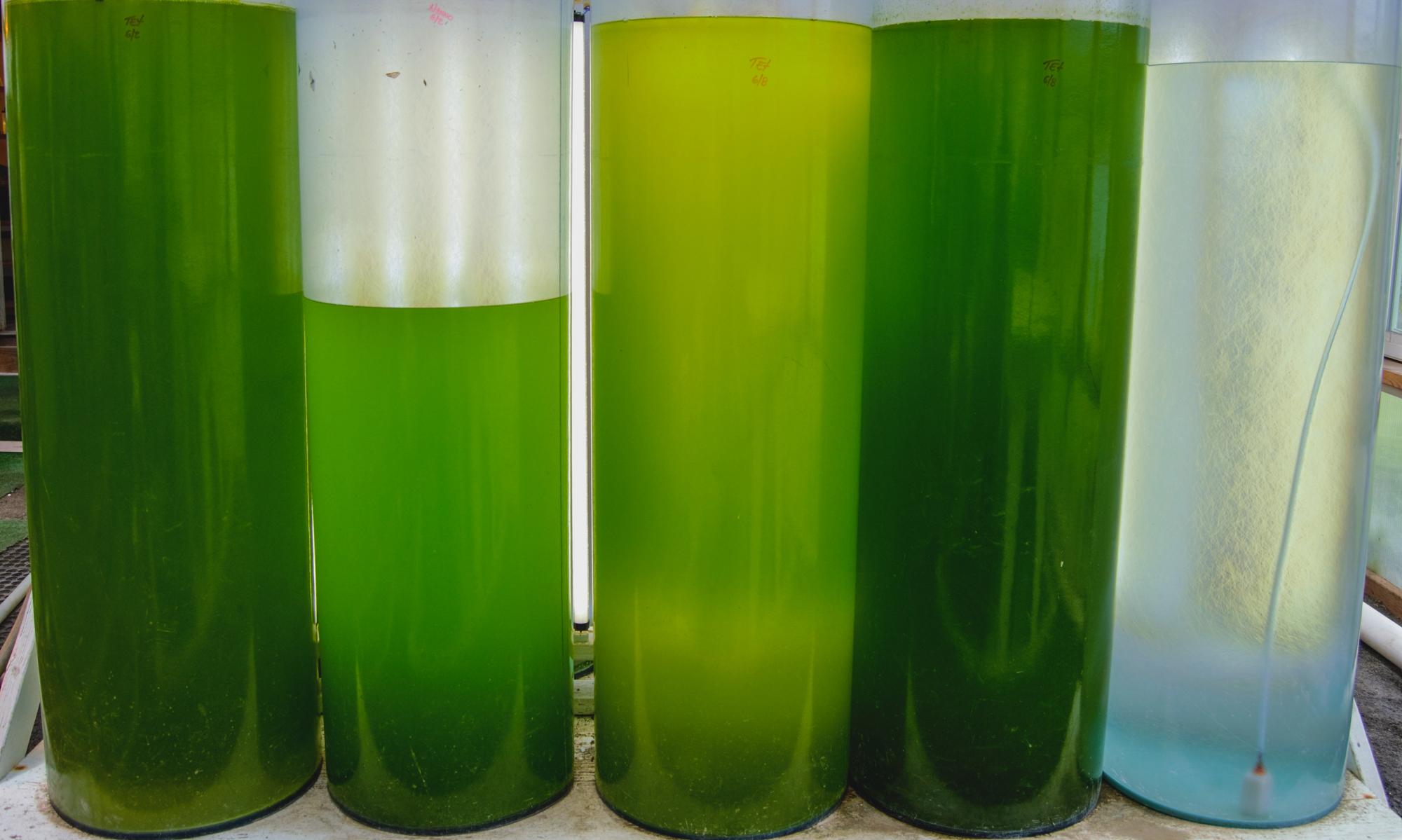We celebrate oysters and tackle climate change along the Hood Canal.
Aw, shucks: This week, shellfish get their due
When a Global Issue is Felt Locally
The impacts of climate change will vary from nation to nation, state to state, and city to city. Here in Washington, climate change is expected to increase fire frequency and severity in our forested areas, temperatures will continue to rise, coastal flooding will increase, and our oceans will become more acidic. Learn more about how climate change not only affects our marine environments but also plays an significant role in our local and national economies. Explore the infographic below.
Inforgraphic created by Erica Simek Sloniker, GIS & Visual Communications
Learn more about Ocean Acidification
A Shift in Our Oceans
As more and more carbon dioxide enters our atmosphere, our natural environments respond differently. Where some regions may become hotter, and others may become cooler, our oceans become more acidic. Explore the infographic below to learn more about ocean acidification and how a small shift in ocean chemistry has a big impact for our marine organisms.
Inforgraphic created by Erica Simek Sloniker, GIS & Visual Communications
Pickleweed in a Pickle at Dabob Bay
Written by Joelene Boyd, Stewardship Coordinator, Puget Sound Program
Photographed by Milo Zorzino, Volunteer Photographer
While visiting the Dabob Bay conservation easement this past month I noticed something I had never seen before. At first I mistook it for a plastic oyster bag that was degrading, then I noticed more and more patches along the spit and it was only present in the pickleweed (Salicornia). Pickleweed is a native saltmarsh succulent plant that can withstand and grow in high salinity conditions.
Pickleweed (Salicornia) at Dabob Bay © Joelene Boyd
A volunteer and I decided to take a break from easement monitoring photos and get a closer look. “It looks like silly string,” we said to each other. Upon further inspection and some prodding we discovered that it was plant-like and when breaking it apart it felt like we were snapping tiny roots. One of the volunteers in our group knew exactly what it was – dodder. Its unimpressive name sells this parasitic plant short of its tenacity and impact. Dodder is a leafless and rootless filamentous plant that gets nutrients and water from host plants (in this case pickleweed) by wrapping itself and becoming intertwined to the host plant. Morning glory is a close relative of dodder which gives an indication of how persistent it can be. Once we realized what it was we noticed there were discrete patches of dodder along the eastern side of the spit. Since dodder is a native to this type of environment there is no plan to control it but it does raise a good and age old question, especially if you are a pickleweed at Dabob Bay – when is a weed a weed?
Besides discovering a cool new plant at the Long Spit easement in Dabob Bay 8 volunteers along with Melissa Watkinson and Kara Cardinal helped out to remove Scotch broom and pick up garbage along the spit. After we finished representatives from Rock Point Oyster gave us a tour of their oyster production facility.
LEARN HOW YOU CAN BE A VOLUNTEER
Oyster Love: All the Ways They Benefit Us
Created by Erica Simek Sloniker, Visual Communications
Oysters are filter feeders. An adult oyster can filter 25 gallons or more of water per day in search of food. In doing so, they filter algae from the water, reducing nutrient loads and keep bay water clear so that eelgrass and other marine life can thrive.
More oysters equal cleaner water for everyone. Fewer oysters means our bays and estuaries are worse off. And if water is too polluted, the oysters living in it can be poisonous for us eat.
The Conservancy, shellfish growers, and other partners like the Puget Sound Restoration Fund and Washington Department of Fish and Wildlife are working to restore wild, native oysters in the bays of Puget Sound.








